
Physical Review Fluids
metrics 2024
Exploring the Depths of Fluid Dynamics
Introduction
Physical Review Fluids is an esteemed journal published by the American Physical Society, focusing on the intricate and essential field of fluid dynamics. With an impressive Q1 ranking in categories such as Computational Mechanics, Fluid Flow and Transfer Processes, and Modeling and Simulation, this journal serves as a pivotal resource for researchers and professionals seeking to disseminate high-quality and innovative research findings. The journal's scope encompasses a broad spectrum of topics within fluid mechanics, promoting advancements in theoretical, computational, and experimental methodologies. Although it is not an open-access journal, its publications are critically well-received, underpinned by its strong standing in the Scopus rankings which place it in the top percentiles across various relevant fields. Physical Review Fluids has been a foundational platform for scholars to share their discoveries from 2016 through 2024, making it an indispensable asset in the ongoing evolution of fluid dynamics research.
Metrics 2024
 1.07
1.07 2.50
2.50 2.70
2.70 56
56Metrics History
Rank 2024
Scopus
IF (Web Of Science)
JCI (Web Of Science)
Quartile History
Similar Journals

Experimental and Computational Multiphase Flow
Innovating Research in Multiphase Fluid DynamicsExperimental and Computational Multiphase Flow, published by SpringerNature, is a prestigious academic journal that critically examines advancements in the field of fluid dynamics, with a specialized focus on multiphase flow phenomena. Since its inception in 2019, the journal has established a remarkable reputation, attaining Q1 status in Fluid Flow and Transfer Processes as well as Mechanical Engineering according to the 2023 category quartiles, reflecting its high impact and relevance in these domains. With Scopus rankings placing it among the top 15 journals in both Chemical Engineering and Nuclear Energy and Engineering, Experimental and Computational Multiphase Flow is an essential resource for researchers, professionals, and students engaged in cutting-edge studies and applications. Although it operates on a subscription model, the journal remains dedicated to disseminating high-quality research and fostering a deeper understanding of complex fluid interactions across various scientific disciplines. By prioritizing innovative methodologies and interdisciplinary collaborations, the journal aims to significantly contribute to the ongoing evolution of multiphase flow research, recognizing its critical importance in engineering and energy sectors.

Fluid Dynamics
Pioneering insights in mechanical and fluid phenomena.Fluid Dynamics is a distinguished journal that has been at the forefront of research in the field of fluid flow and transfer processes since its inception in 1966. Published by MAIK NAUKA/INTERPERIODICA/SPRINGER, this journal serves as a valuable platform for engineers, scientists, and researchers dedicated to advancing the understanding of mechanical and fluid dynamic phenomena. With a Q3 ranking in key categories such as Fluid Flow and Transfer Processes, Mechanical Engineering, and Physics and Astronomy, Fluid Dynamics holds a significant position in the academic community, attracting submissions that push the boundaries of knowledge and application. Although it does not currently offer open access options, the journal is recognized for its robust editorial standards and impactful contributions to the field, making it essential reading for anyone involved in fluid dynamics research. Given its consistent publication through to 2024, Fluid Dynamics continues to inspire innovation and collaboration in an ever-evolving scientific landscape.
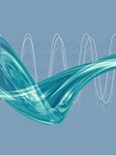
Annual Review of Fluid Mechanics
Empowering Researchers with Critical Fluid InsightsThe Annual Review of Fluid Mechanics, published by Annual Reviews, is a premier journal in the field of fluid mechanics, dedicated to advancing our understanding of fluid behavior through comprehensive and critical reviews of contemporary research. With an impressive impact factor that reflects its stature—ranking Q1 in Condensed Matter Physics and positioned 4th out of 434 in Scopus’s Physics and Astronomy category—it stands as a vital resource for researchers, professionals, and students alike. Since its inception in 1970, the journal has provided vital insights and synthesized knowledge that drive innovations and applications across various scientific disciplines. Although it does not offer open access, the journal ensures rigorous editorial standards and captivating content that contributes meaningfully to the academic discourse in fluid dynamics. Published annually, the Annual Review of Fluid Mechanics continues to be a cornerstone for anyone interested in the complexities of fluid movement and its implications in both theoretical and practical contexts.
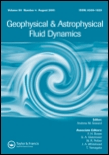
GEOPHYSICAL AND ASTROPHYSICAL FLUID DYNAMICS
Investigating Fluid Dynamics from Earth to the CosmosGEOPHYSICAL AND ASTROPHYSICAL FLUID DYNAMICS, published by Taylor & Francis Ltd, is a pivotal journal that caters to the intersection of fluid dynamics within geophysical and astrophysical contexts. With an ISSN of 0309-1929 and an E-ISSN of 1029-0419, this journal has been a cornerstone of interdisciplinary research since its inception in 1971. It showcases cutting-edge studies in fluid dynamics as applied to various fields including Astronomy, Geophysics, and Computational Mechanics, reflected in its 2023 category rankings of Q2 and Q3 across diverse areas such as Geochemistry and Mechanics of Materials. The journal aims to provide a platform for original research, theoretical advancements, and comprehensive reviews that contribute to the understanding of fluid behavior in natural and extraterrestrial environments. Although currently not open access, it remains influential in its fields, appealing to a dedicated audience of researchers, professionals, and students seeking to deepen their knowledge and foster innovative approaches to complex fluid dynamics problems. Leveraging its robust Scopus rankings, the journal continues to advance scholarly discourse and support the evolving narratives of geophysical and astrophysical sciences.

TRANSPORT IN POROUS MEDIA
Bridging Theory and Application in Chemical EngineeringTRANSPORT IN POROUS MEDIA is a prominent peer-reviewed journal published by Springer, dedicated to advancing the understanding of fluid and energy transport processes in porous structures. With an ISSN of 0169-3913 and an E-ISSN of 1573-1634, this journal has established itself as a leading platform in the realms of chemical engineering and catalysis, achieving a ranking of Q2 in Chemical Engineering and Q3 in Catalysis as of 2023. The journal encompasses a wide scope, covering theoretical, experimental, and applied research that explores the complexities of porous media transport phenomena, thus catering to a diverse audience of researchers, professionals, and students in related fields. Although open access options are not offered, TRANSPORT IN POROUS MEDIA remains an excellent resource for those seeking to stay at the forefront of advancements and challenges in porous media transport. With a publication history dating back to 1986 and ongoing contributions expected until 2024, this journal continues to play a crucial role in fostering knowledge and innovation within the discipline.
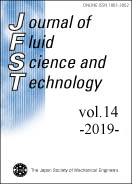
Journal of Fluid Science and Technology
Bridging Theory and Application in Fluid ScienceThe Journal of Fluid Science and Technology, published by the Japan Society of Mechanical Engineers, serves as a pivotal platform for the dissemination of cutting-edge research in the fields of fluid mechanics and mechanical engineering. With an ISSN of 1880-5558, this Open Access journal has been dedicated to advancing the understanding of fluid flow and transfer processes since its establishment. As of 2023, it holds a significant position with a Q3 quartile ranking in both Fluid Flow and Transfer Processes and Mechanical Engineering categories. Researchers and practitioners are encouraged to explore the journal’s extensive collection of articles, contributing to the body of knowledge that impacts various practical applications in engineering and technology. The journal, which has established a reputation for quality amidst a competitive landscape, further fosters international collaboration and education by providing unrestricted access to its content. For professionals and students alike, the Journal of Fluid Science and Technology represents an invaluable resource for the latest findings and innovations in fluid dynamics and mechanical systems.
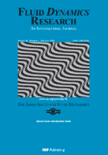
FLUID DYNAMICS RESEARCH
Innovating Research in Fluid Dynamics and BeyondFLUID DYNAMICS RESEARCH, published by IOP Publishing Ltd, is a pivotal journal dedicated to advancing the understanding of fluid dynamics through interdisciplinary research that spans several domains including mechanical engineering and physics. With an ISSN of 0169-5983 and E-ISSN 1873-7005, this journal provides a vital platform for researchers aiming to disseminate new findings and theoretical advancements in fluid flow and transfer processes. As of 2023, FLUID DYNAMICS RESEARCH holds a commendable position within the academic community, ranked Q3 in fluid flow and transfer processes, mechanical engineering, and miscellaneous physics and astronomy categories. The journal showcases a diverse array of articles that not only inspire collaboration among professionals and students but also ensure that theoretical and experimental studies are accessible for further development in the field. Operating from the United Kingdom, the journal offers a unique opportunity for scholars worldwide to contribute to the vibrant community dedicated to understanding the complexities of fluid dynamics, even as it anticipates converging its years of research from 1986 to 2024.

THEORETICAL AND COMPUTATIONAL FLUID DYNAMICS
Elevating Research Standards in Fluid Mechanics.THEORETICAL AND COMPUTATIONAL FLUID DYNAMICS, published by SPRINGER, stands at the forefront of scientific discourse in the fields of fluid mechanics and computational methods. With an impressive impact factor reflecting its significance and reach, this journal has consistently maintained a Q1 ranking across multiple categories, including Computational Mechanics and Condensed Matter Physics as of 2023. Covering a rich scope of theoretical research and computational analysis, it aims to advance the understanding of fluid flow and transfer processes, making it an essential resource for researchers, professionals, and students alike. The journal, with its historical archive extending from 1989 to 2024, not only contributes to foundational theories but also integrates applied research and emerging computational techniques, thus facilitating innovation within the discipline. As a result, THEORETICAL AND COMPUTATIONAL FLUID DYNAMICS serves as a crucial platform for disseminating impactful findings that shape future advancements in fluid dynamics research.

FDMP-Fluid Dynamics & Materials Processing
Exploring the Nexus of Fluid Dynamics and Material InnovationFDMP-Fluid Dynamics & Materials Processing, published by TECH SCIENCE PRESS, stands as a significant contribution to the field of materials science, specifically focusing on the intricate relationships between fluid dynamics and material processing. With an ISSN of 1555-256X and an E-ISSN of 1555-2578, this journal offers an open-access platform where researchers can disseminate their work broadly, promoting collaboration and innovation among professionals and students alike. Established in 2007 and continuously evolving through to 2024, the journal is classified in the Q4 category of materials science, ranking at #347 out of 463 in the Scopus database, signifying its niche yet crucial role in the academic community. By focusing on the dynamic interplay between fluid behavior and material properties, FDMP addresses contemporary challenges and advances in material processing techniques. The journal plays a pivotal role for academics and industry professionals seeking to push the boundaries of knowledge and application in materials science.
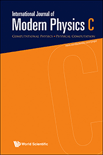
INTERNATIONAL JOURNAL OF MODERN PHYSICS C
Unveiling Innovations in the Realm of Modern PhysicsINTERNATIONAL JOURNAL OF MODERN PHYSICS C, published by WORLD SCIENTIFIC PUBL CO PTE LTD, is a pivotal platform for disseminating groundbreaking research in the fields of computational theory, mathematical physics, and statistical physics. With an ISSN of 0129-1831 and an E-ISSN of 1793-6586, this esteemed journal, based in Singapore, serves a global audience of researchers and professionals who are dedicated to pushing the boundaries of knowledge in modern physics. The journal's rigorous selection process ensures the inclusion of high-quality articles that advance the understanding and application of complex theoretical concepts. Currently, the journal holds a commendable Q3 quartile ranking across several categories, including Computational Theory and Mathematics and Statistical and Nonlinear Physics, reflecting its influence and relevance in the academic community. Covering a wide array of topics from 1996 to 2024, the INTERNATIONAL JOURNAL OF MODERN PHYSICS C is not just a repository of research; it is a critical resource for students and scholars aiming to stay at the forefront of modern scientific inquiry.